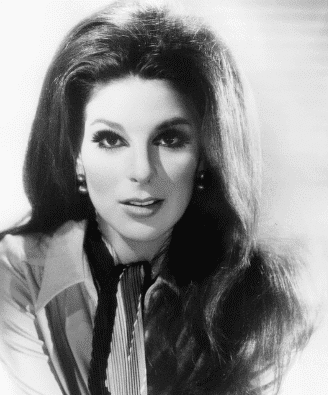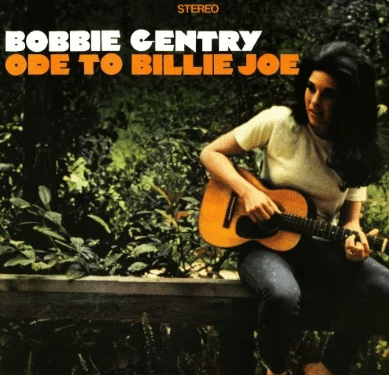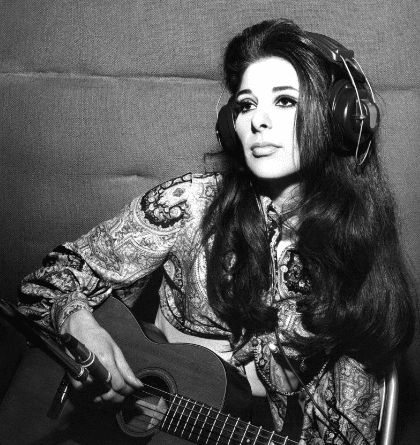This article first appeared on the Magnolia Tribune.
- Just as we may never know why Billie Joe jumped off the bridge, the mystery of Bobbie Gentry is just as haunting.
While it’s not the third of June, it’s still another “sleepy dusty Delta day” in Leflore County, and people are still wondering about Billie Joe McAllister and the Tallahatchie bridge.
The haunting lyrics of “Ode to Billie Joe” was made popular by singer Bobbie Gentry in the summer of 1967. Gentry’s sultry voice and the mesmerizing strings and guitar tune combined with the story of a teen suicide told over the dinner table (pass the biscuits, please) crept into the psyche of the American public. When it was released on July 10, the song was a sensation. By the end of the summer, it was the number one song, and the album by the same name knocked the Beatles’ Sergeant Pepper’s Lonely Hearts Club Band album from its 15-week reign at number one.

The genre-bending song, released on Capitol Records, had airplay on pop, country and R&B stations, and Bobbie Gentry made appearances on a number of television shows including Ed Sullivan, The Carol Burnett Show, The Smothers Brothers, and The Perry Como Show.
Born Roberta Lee Streeter on July 27, 1942, Gentry grew up near Woodland, a community in Chickasaw County, Mississippi. Her mother, Ruby Lee, moved to California shortly after her birth, leaving Gentry to be raised on a farm by her father’s parents. She lived in Greenwood with her father, Robert Harrison Streeter, for a few years. While there, she learned to play the banjo and guitar.
Gentry moved to Palm Springs, California when she was 13. Her mother had remarried, and for a short time, Gentry sang with her mother as a duo, Ruby and Bobbie Meyers. She changed her stage name to Bobbie Gentry after seeing the 1952 film Ruby Gentry about a backwoods girl who was poor but beautiful, who married the town tycoon.
Gentry married casino owner William Harrah in 1969, and despite her $150,000 pear-shaped diamond ring, the marriage ended after just four months.
Performing Career
Gentry attended college at UCLA in Los Angeles where she studied philosophy. She worked part-time doing clerical work and as a fashion model, and occasionally performed at nightclubs and country clubs. When she appeared at the Les Folies Bergeres nightclub in Las Vegas, Bob Hope encouraged her to keep performing.

She transferred to the Los Angeles Conservatory of Music and took classes in composition, music theory, and arranging. Her true ambition was to write songs to sell to other artists. She recorded the demo of her song, “Ode to Billie Joe” at Whitney Recording Studio in Glendale, California rather than hire someone else to sing it because it was cheaper to sing it herself.
She took the song to Capitol Records along with a song she wrote called “Mississippi Delta.” A string arrangement by Jimmie Haskell was dubbed onto the original recording at Capitol, and the A&R team at the record company decided to make “Ode to Billie Joe” the A-side. The single sold over 300,000 copies worldwide and “Ode to Billie Joe” was listed in Rolling Stone magazine among the 500 greatest of all time.
Producers at Capitol assembled the rest of the album from the twelve demos Gentry recorded. The album had elements of blues, folk, and jazz, all with Gentry’s memories of her home in Mississippi. Gentry, who just months before was unknown, won three GRAMMY Awards in 1967, and was named the Most Promising Female Vocalist by the Academy of Country Music.
The next year, Gentry recorded another single and three albums. A big departure from “Ode to Billie Joe,” Gentry took part in the competition at the Italian Song Festival in Sanremo. She was one of two performers who sang “La Siepe” by Vito Pallavicini. Capitol released the song as a single in February 1968. The B-side featured another Italian tune recorded by Gentry, “La Citta’ e’ Grande.”
Her second album was a concept album with Gentry playing almost every instrument on each track. She played piano, guitar, bass, banjo and vibes. The Delta Sweete, released in February 1968, drew inspiration from Gentry’s Mississippi Delta roots and critics called it one of the unacclaimed masterpieces of the 1960s.
A third album, Local Gentry, was released in August of the same year without much acclaim. Her fourth, and final, album was released the next month. Bobby Gentry and Glen Campbell features duets with Campbell. The duo had a great chemistry, and the album was a big success. The album went gold, peaking at number 11 on the Billboard Top Albums chart and number one on the Top Country Album chart. Gentry was nominated for Top Female Vocalist.
Gentry recorded three more albums with Capitol, Touch ‘em with Love (1969), Fancy (1970), and Patchwork (1971). A restructuring at Capitol resulted in Gentry being dropped from the label.

But she was still writing and performing. She wrote “Another Place, Another Time” for Max Baer Jr.’s 1975 film Macon County Line. The song was released as a promotional single. Baer directed the feature film Ode to Billy Joe, based on Gentry’s original hit song, in 1976. The film starred Glynnis O’Connor and Robby Benson. A new version of the single, with a spelling to match the film’s title (Billy vs. Billie) was released, and once again made the record charts.
Out of the Spotlight
Bobbie Gentry’s star rose fast, and it seemed to fall as fast as it rose. By the late 1970s her public appearances became less frequent, and her recordings stopped altogether.
She appeared as a guest on The Tonight Show Starring Johnny Carson in December 1978, and she attended the Best of Vegas Awards in March 1980. Her last performance was as one of many celebrity guests on a television special, An All-Star Salute to Mother’s Day in May 1981, where she performed “Mama, a Rainbow” from the musical Minnie’s Boys.
Her final appearance in public was when she attended the Academy of Country Music Awards in April 1982.

For 42 years, Bobbie Gentry has managed to stay out of the spotlight, or any light for that matter. She has made no public appearances, nor has she given any interviews. In 2016, a reporter for The Washington Post believed he solved the mystery of where Bobbie Gentry lives. He claimed she lived in an 8,000 square foot home in a gated community just a two-hour drive from the Tallahatchie bridge, in Memphis. A couple of years later a reporter from The Tennessean claimed she lived in Los Angeles.
Just as we may never know why Billie Joe jumped off the bridge, the mystery of Bobbie Gentry is just as haunting.
Her name is immortalized on a marker, part of the Mississippi Country Music Trail, at the base of the Tallahatchie Bridge (actually named the Ashwood Bridge) which crosses the Tallahatchie River in Leflore County, Mississippi.
This article first appeared on the Magnolia Tribune and is republished here under a Creative Commons license.
Read original article by clicking here.

